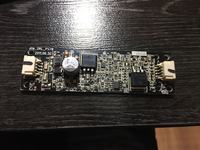Hello,
I have a problem with one lamp. Well, it does not work at all DRL for daytime driving or position (it is one LED strip that shines strongly in the DRL position and dims as the lights turn on)
I glued the lamp out and went to the inverter.
I measured the voltage at the output and it looks so that without load and applying the same voltage meter to the output of the inverter, it shows less than 6V but it falls off all the time. For a few seconds it goes down to 0V. Of course, when the LEDs are connected, the voltage immediately goes to 0V (even the LEDs will not blink).
I have a 12V power supply and a good multimeter.
Can anyone help me, how should I diagnose a faulty item on the following tile?
I have a problem with one lamp. Well, it does not work at all DRL for daytime driving or position (it is one LED strip that shines strongly in the DRL position and dims as the lights turn on)
I glued the lamp out and went to the inverter.
I measured the voltage at the output and it looks so that without load and applying the same voltage meter to the output of the inverter, it shows less than 6V but it falls off all the time. For a few seconds it goes down to 0V. Of course, when the LEDs are connected, the voltage immediately goes to 0V (even the LEDs will not blink).
I have a 12V power supply and a good multimeter.
Can anyone help me, how should I diagnose a faulty item on the following tile?




